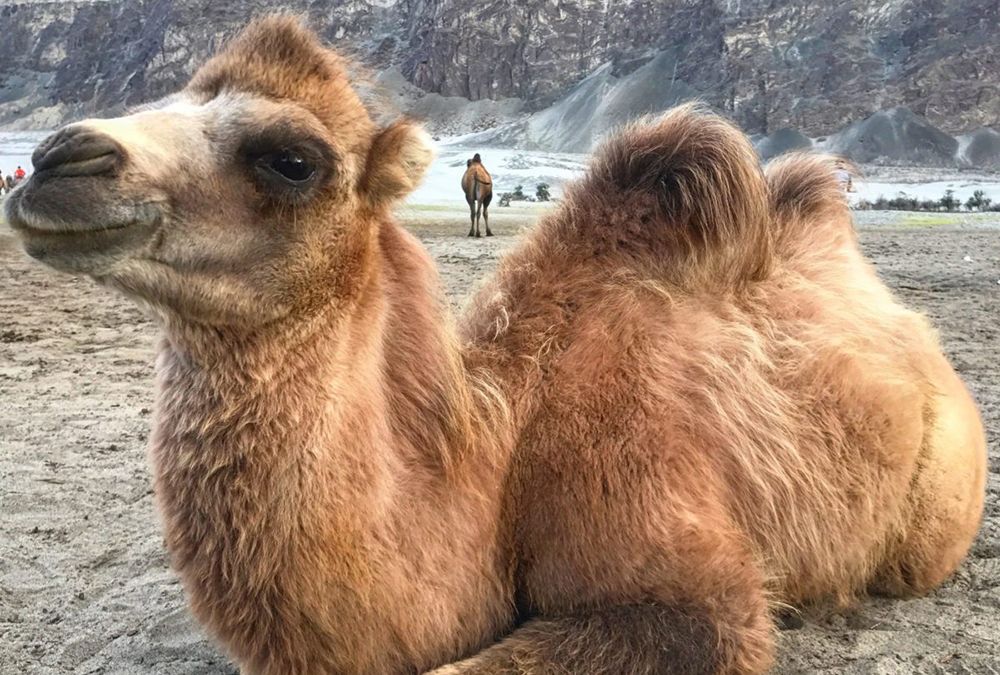
How to Transition Your Bed for Winter?
October 12, 2021
Why a Camel Hair Duvet is an Intelligent Investment
October 22, 2021As more and more people become more concerned with climate change and global warming, they are becoming increasingly aware of the sustainability of their purchases, including their luxury bedding. Sustainable living is becoming an essential ideology in today’s modern world, as the impacts of our production and waste on our environment are becoming inescapable. But what exactly is sustainable living, and what are the best fibers for achieving sustainability in our daily lives? The goal of sustainability is to create cycles of behavior with the most significant long-term benefits for the largest number of people. Over the years, textiles and fabrics from camel hair are some of the finest and humanely harvested fibers in the world.
Along with being seen as a hardy form of transportation in historical adventures, camels also provide the world with some of the most amazing fibers for today’s luxury fabrics and make up the best duvet filling to keep your bed comfortable throughout the year. Most often, camel hair is obtained from the two-humped Bactrian camel that is typically found in the steppes of Eastern and Central Asia and has adapted to survive in the frigid climates of the Gobi Desert. Bactrian camels are known for their long, lustrous hair that can be made into a natural duvet and other high-quality bedding materials. Today’s luxury textile market competes for camel hair and textiles because of the slow and humane process of obtaining the fiber, which makes it one of the scarcest fibers in the world.
How is Camel Hair Harvested?
Camel’s hair is harvested by hand, and the best quality camel hair is purported to come from the nomadic households of Kazakhstan and Mongolia. In the past, a “trailer” would follow behind the camels and pick up the hair fibers as they fell from the animals. Today, the breeders are no longer nomadic, and will simply wait for the hair on the animals to fall off. They also may resort to shearing the hair if it isn’t ready to be harvested at the same time.
After all of the hair has fallen off the camel, or been shorn off, it is collected and cleaned to remove any impurities. Then the hair is carded, which is the process of separating the hair fibers into strands in order to be spun into yarn. Once the fibers are spun into yarn, it is rewashed to prepare it to be worked into textiles.
How Does Camel Hair Impact the Environment?
Camel hair is considered one of the most environmentally sustainable kinds of animal fibers. The Bactrian camel is one of the only sources of wool that naturally sheds its hair, which makes it unnecessary to restrain them during the harvesting process. By not having to control the animals during the harvesting process, it limits the chances the animals will be injured or experience trauma.
There is also no caustic or toxic chemicals used when harvesting the fibers from the Bactrian camels, and the resulting fibers are hardly ever dyed. If a dye is used on the fibers, it is typically a natural dye that is environmentally friendly. The camel wool is also entirely biodegradable, which means it doesn’t contribute to pollution when discarded.
Although expensive, camel hair products, like luxury bedding, is an intelligent investment. With its natural temperature regulating properties and other benefits, a camel down duvet from CamelUs is a wise investment. Our camel down duvet is the best all-season duvet money can buy and is the most sustainable, luxury bedding on the market.




